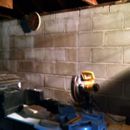Garage moisture issues
Hi,
Our garage is unfinished cement block, and I would like to finish it at some point with insulation and a stud wall. However, I am concerned by the amount of moisture that is currently present in the garage.
The garage is typically very damp and musty. When it rains, there are are discolorations on the walls that I assume are from water being wicked up by the cement (see photo below).
https://dl.dropboxusercontent.com/u/689281/Photos/2015-10-05%2017.30.32.jpg
The garage itself sits at a high point on our property. Behind the garage, the ground is 2-3 feet above floor level. After a heavy rain, there is often a puddle of water sitting directly against the cement.
My question: what can I do to resolve these issues? My first thought is to dig a ditch behind the garage so water flows away from the foundation and towards lower ground. Aside from that I really have no idea what can be done, and would appreciate some advice!
Thanks,
Cory
.
GBA Detail Library
A collection of one thousand construction details organized by climate and house part










Replies
Cory,
The best solution to this problem won't be cheap, so what you decide to do depends on how much money you are willing to spend to fix up your garage.
Ideally, you would excavate the soil that now sits against your garage wall. You want to lower the grade on the uphill side so that the final grade is below the top of the slab. Then you need to dig a trench around the perimeter of your garage on three sides of the garage -- the sides without your garage door -- for a French drain (with perforated pipe in the trench, along with crushed stone). This drain pipe should lead to daylight.
You may have to build a retaining wall on the uphill side of your garage to hold back the soil. This retaining wall should also include a drainage system, with pipes that lead to daylight. The backfill on the uphill side of the retaining wall should consist of free-draining material like crushed stone, wrapped in landscape fabric.
If you want to do a great job, you can drill an inspection hold through your garage's concrete slab to see if there is a vapor barrier under the slab. If there isn't, you can either install a new polyethylene vapor barrier on top of the slab, followed by a new 3-inch thick concrete slab, or you can demolish the existing slab and install a new slab over a vapor barrier. In either case, you may want to install a layer of rigid foam under the slab as well. (Yes, I know that's a lot of expensive work, and that it's unlikely that you will do it -- but that would be the right way to proceed.)
Finally, you need to install a so-called waterproof coating on the interior side of your CMU walls. Brand names for these products include Thoroseal, UGL Drylok, and Xypex.
Once this work is done, you can think about insulating the walls. (I suggest a continuous layer of rigid foam on the interior side of the walls.)
Is this a lot of work? You bet. Is it worth it? Only you can decide.